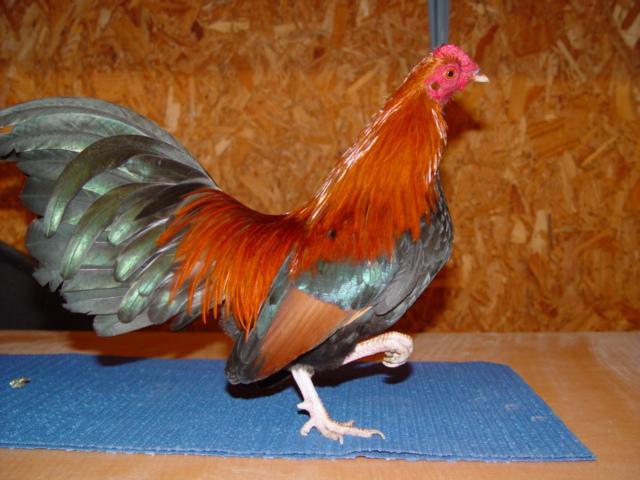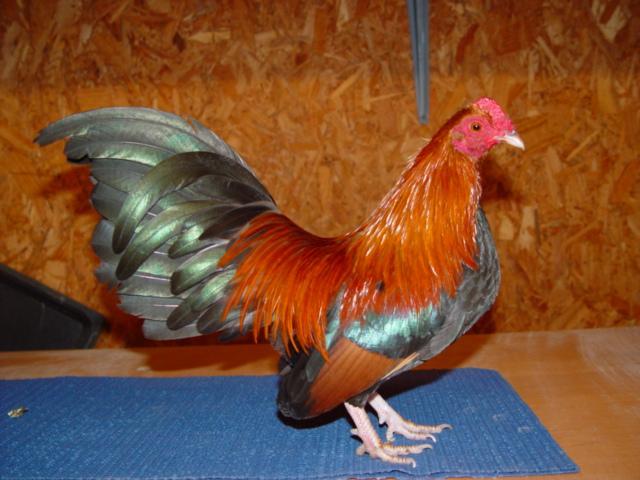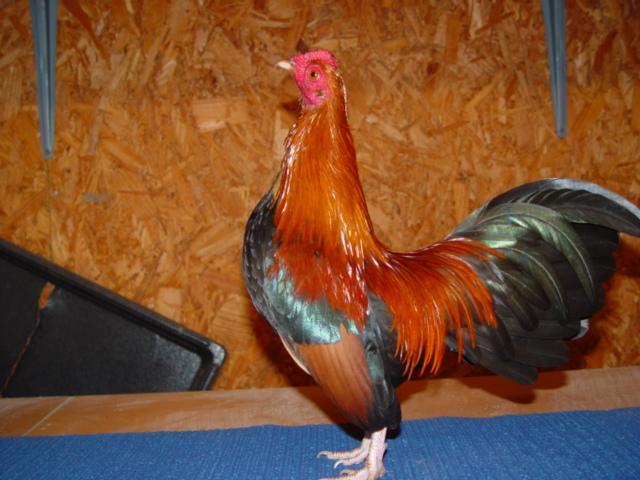Ok everyone fire up those printers.
Bumblefoot
This is a condition affects the pads of the feet.
Bumble foot affects all birds
It is caused by the bacteria staphylococcus aureus, which is present wherever there are chickens.
Avoidance
Bumblefoot is difficult to cure.
Make sure the roosts are rounded and not too high off the ground.
Sand off any potential splinter areas.
Ensure plenty of litter, 3-4 inches or more deep in the coop
Don't use wire bottom cages, unless you really have to
Give vitamin supplements, especially Vitamin A.
For problem flocks Biotin and Vitamin E+C levels should also be checked - and where feed is low (or has been in store for more than 21 days) a supplement should be given.
Staph enters the foot through injury to the pad - either by bruising or breaks in the skin caused by sharp objects, a small cut, bruise or any small opening
Avoid high roosts
Avoid sharp litter
Symptoms
Most people notice swelling of the footpad, and if you look at the pad and note a dark, blackish scab, it is bumblefoot.
The swelling is due to an abscess in the pad.
It causes, lameness, swollen foot, a scab on the foot pad
Pre - Treatment
Isolate the bird
Make sure it is out of drafts and direct sun, but with fresh air
Fresh food and water to be available at all times
Put a deep layer of fresh clean SOFT litter for the bird to stand on
And if the bird is laying supply a nice clean soft nest area also
Have on hand the following:
Betadine, hydrogen peroxide or Lysol (*Lysol see bottom of page for more information), Neosporin or bacitracin, sterile scalpel or 14g needle, coban, sterile 2x2 gauze pads, surgeon's gloves, Epsom salts, anti bacterial soap, small scrubbing brush
Have a cage ready to put the chicken in when you're finished, or a small dog kennel carrier with scrap towels for bedding
Make sure you have deep litter in the cage
I have used Terramycin or Baytril in the water for a week - follow the directions on the package.
Treatment
Wash the legs and feet thoroughly with warm soapy water with some antiseptic in the water, not too much you dont want to burn the legs
Or you can - Soak the foot in an Epson salts solution as directed on the package for a human
Then lightly scrub the affected area with an anti bacterial hand soap
Scrub it good enough to remove most of the scab, but not hard enough to damage the leg and make it bleed
Rinse the leg(s) and feet and dry thoroughly
Then spray the affected area with Lysol then apply bacitracin and bandage.... keep the bird separated in a small cage. (Or you can use a dog kennel carrier, put some scrap towels for bedding and do this every night right before roosting time for 3-5 nights
If you dont think that will work then you can try br]
Thoroughly drenching the feet in hydrogen peroxide, full strength for seven days, twice a day
If the foot has any open wounds DO NOT USE HYRDOGEN PEROXIDE, use iodine (Betadine lotion), only use the peroxide to do the initial cleaning out of the wound, not as an ongoing treatment
If any open wounds apply an antibacterial or antibiotic powder
Give the bird a broad-spectrum antibiotic in the drinking water for the next 5 to 7 days
Also give the bird 2 tablespoon of yoghurt (plain unsweetened culture) to keep the bird from getting diarrhea due to the antibiotics, as it upsets the natural flora (bacteria) of their bowel
When it has healed clean the area where the bird was staying with bleach solution and keep the bedding clean 2-3 times a day until the skin on the pad has rehardened.
Then go back to normal care.
It has been found that many of the antibiotics that they used to use are no longer effective against Staph, below are some that I recently found that may be effective (Oct 2005)
Ani staphylococcal Penicillins
Staphylococcal infections
Generic Name
Flucloxacillin
Dicloxacillin -
Cloxacillin
Nafcillin -
Oxacillin
Brand Name:
Floxapen
Dynapen
Diclocil
Tegopen
Methicillin No longer available
Generic Names - Brand Name - Mode of Action - Main Use
Gentamicin Garamycin Mode of action > Inhibit protein synthesis Main Use >Serious Gram negative infections
Netilmicin Netromycin - same as above
Tobramycin Nebcin same as above
Amidacin Amikin same as above
Streptomycin Generics Mode of action> Inhibits protein synthesis Main Use > Tuberculosis
Neomycin Generics Mode of action > Inhibits protein synthesis Main Use > Skin infections (topical)
Spectinomycin Trobicin Mode of action > Inhibit protein synthesis Main Use > Gonorrhoea
Opening the infected area to remove the pus
Sometimes Bumblefoot doesnt have a puss filled pad, check before you cut
If your going to do anything to the bird, it is always a good idea to have a helper with you, but you can do it yourself, just make sure the bird is unable to move about, if you have a stretch bandage, then wrapping this around the birds wings, will certainly help
Before you start, put on a pair of disposable gloves, you dont want the staph infection getting into you, if you have any small nick in your skin it can and will get in to your system
Wash the leg and foot, gently scrub with betadine until clean at least 30 seconds
If you can soak the foot until the scab is soft, do that and then pull off the scab
Lance the pad with the needle or scalpel and squeeze out the pus
Do this under running water
Yes, there will be bleeding
After the pus is out as much as you can get, dip the foot into peroxide solution
The blood will cause a foaming reaction
If there is a lot of bleeding, hold pressure with a sterile 2x2 pad until stopped or under control.
Apply Neosporin or a sulfa ointment to the site
Apply a sterile gauze pad 2 x 2s for padding
You can either use a stretch bandage or wrap the foot firmly with coban (tape)
Wrap so the toes and spur are exposed if youre working on a rooster
Don't wrap so tight that you cut off circulation
You will want to start the wrap on the foot and work up to the leg
If you use the sticky tape, you will find that the chicken cant pull it off, change the dressing in 2-3 days
If your using elastic bandage then change the dressing daily and re-apply the bandage and sterile dressing, I actually prefer the bandage, this way I can check the progress of the wound each day
I keep the chicken confined until the pad is well healed so that it won't open up when they go back to free ranging.








